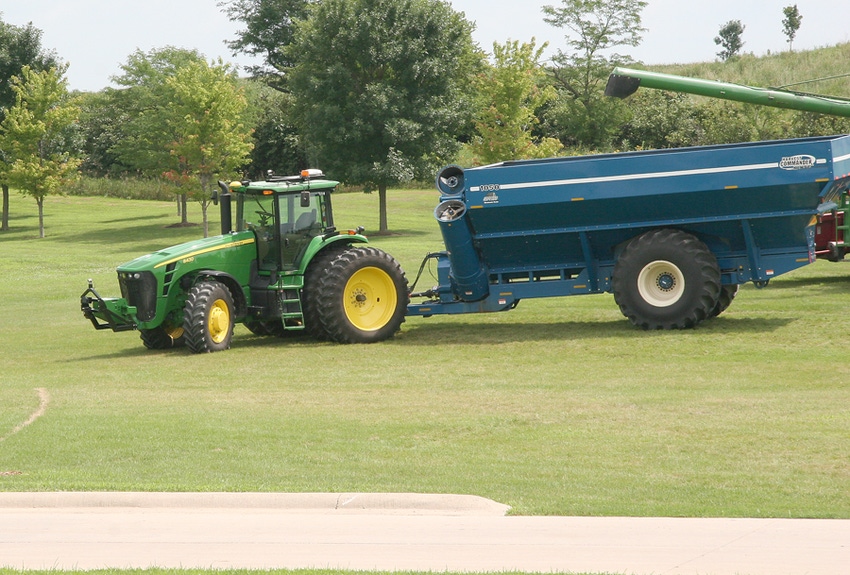
Kinze Manufacturing has been making grain carts, plows and planters in Iowa for nearly 40 years.The company may have broken out of the mold, however, with the announcement of its first autonomous tractor system.The company says it is in the initial stages of developing the system and figuring out how to market the new technology.
July 31, 2011

When Kinze Manufacturing officials began rolling the video for the “big announcement” at their annual Dealer Day event Friday (June 29), the initial reaction among many of the 270 dealers may have been a big yawn.
After all, how many times have dealers seen a tractor pull one of Kinze’s grain carts up to the side of a combine so the cart could begin taking on grain? Then a slow rumble began to move through the assembled dealers and media representatives: “There’s no one driving the tractor.”
At least two other companies are reportedly working on driver-less operating systems for agricultural applications, but Kinze Manufacturing Inc., the Williamsburg, Iowa-based company that’s been building grain carts, plows, planters and other equipment for 40 years, may have beaten them to the punch with the announcement Friday.
“We’re excited to introduce the first truly autonomous row crop solution in the world on this scale,” said Susanne Kinzenbaw Veatch, vice president and chief marketing officer at Kinze. “This technology could be used to do a variety of tasks, including planting, nourishing, maintaining and harvesting crops.”
As shown in a field demonstration at the Dealer Day, Kinze and its partners have developed an autonomous system that allows the combine operator to give voice commands to have the tractor and cart move parallel with the combine, take on grain and return to a fixed location. At the latter, the tractor can be instructed to move to the side of a grain truck and unload the grain.
As the rural labor shortage becomes more critical, systems like the Kinze Autonomy Project can reduce the need for skilled operators by taking the human element out of the tractor cab.
“It’s our goal to help reduce grower fatigue and help them make the most of their harvest,” says Veatch. “As growers ourselves, we know how crucial it is to be productive during the short planting and harvest windows.”
The technology was originally developed in a laboratory setting using computer simulations. Kinze engineers partnered with Jaybridge Robotics in Cambridge, Mass., to bring the technology from the lab to the field and to test and refine the work.
Kinze engineers have planted a crop using the new technology, according to Brian McKown, chief operating officer for Kinze. “We believe the Kinze Autonomy Project will allow farmers to handle a number of tasks involved in nourishing their crops.”
McKown said Kinze is in the beginning stages of deciding how best to utilize the system. The company has not laid out firm plans for marketing the new technology or how much the technology may cost.
“We had to make sure the technology worked first,” he said, noting that Kinze has been working on the closely-guarded technology for about two years. “Our marketing personnel didn’t know anything about this project until a few days ago.”
Besides working on the guidance technology, Kinze has also performed extensive obstacle detection testing to ensure the accuracy and safety of the autonomous equipment. Engineers simulated real-world scenarios to ensure equipment would detect objects such as fence posts, stand pipes and farm animals.
Similar autonomous technology has been used since the 1990s in other industries, including mining, construction and the military. “Some simple forms of autonomy are used in rice production and orchard operations,” said Veatch.
“However, until now, no other manufacturer associated with row crop production has offered truly autonomous technology like this.”
You May Also Like



